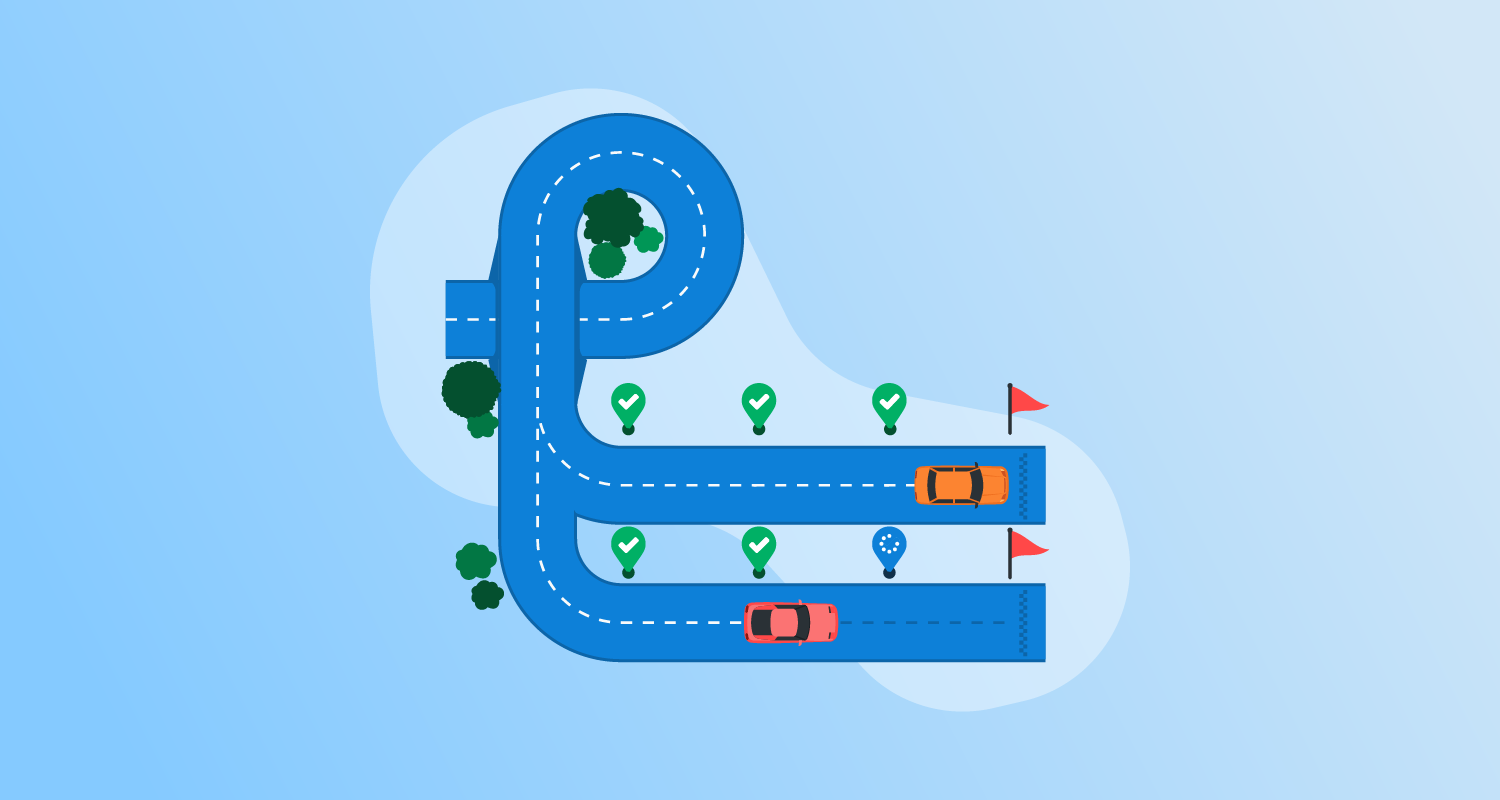GitHub Actions has a large ecosystem of high quality third-party actions, plus built-in support for executing build steps inside Docker containers. This means it’s easy to run end-to-end tests as part of a workflow, often only requiring a single step to run testing tools with all the required dependencies.
In this post, I show you how to run browser tests with Cypress and API tests with Postman as part of a GitHub Actions workflow.
Getting started
GitHub Actions is a hosted service, so all you need to get started is a GitHub account. All other dependencies like, Software Development Kits (SDKs) or testing tools, are provided by the Docker images or GitHub Actions published by testing platforms.
Running browser tests with Cypress
Cypress is a browser automation tool that lets you interact with web pages in much the same way an end user would, for example by clicking on buttons and links, filling in forms, and scrolling the page. You can also verify the content of a page to ensure the correct results are displayed.
The Cypress documentation provides an example first test which has been saved to the junit-cypress-test GitHub repo. The test is shown below:
describe('My First Test', () => {
it('Does not do much!', () => {
expect(true).to.equal(true)
})
})This test is configured to generate a JUnit report file in the cypress.json file:
{
"reporter": "junit",
"reporterOptions": {
"mochaFile": "cypress/results/results.xml",
"toConsole": true
}
}The workflow file below executes this test with the Cypress GitHub Action, saves the generated video file as an artifact, and processes the test results. You can find an example of this workflow in the junit-cypress-test repository:
name: Cypress
on:
push:
workflow_dispatch:
jobs:
build:
runs-on: ubuntu-latest
steps:
- name: Checkout
uses: actions/checkout@v1
- name: Cypress run
uses: cypress-io/github-action@v2
- name: Save video
uses: actions/upload-artifact@v2
with:
name: sample_spec.js.mp4
path: cypress/videos/sample_spec.js.mp4
- name: Report
uses: dorny/test-reporter@v1
if: always()
with:
name: Cypress Tests
path: cypress/results/results.xml
reporter: java-junit
fail-on-error: trueThe official Cypress GitHub action is called to execute tests with the default options:
- name: Cypress run
uses: cypress-io/github-action@v2Cypress generates a video file capturing the browser as the tests are run. You save the video file as an artifact to be downloaded and viewed after the workflow completes:
- name: Save video
uses: actions/upload-artifact@v2
with:
name: sample_spec.js.mp4
path: cypress/videos/sample_spec.js.mp4The test results are processed by the dorny/test-reporter action.
Note that test-reporter has the ability to process Mocha JSON files, and Cypress uses Mocha for reporting, so an arguably more idiomatic solution would be to have Cypress generate Mocha JSON reports. Unfortunately, there is a bug in Cypress that prevents the JSON reporter from saving results as a file. Generating JUnit report files is a useful workaround until this issue is resolved:
- name: Report
uses: dorny/test-reporter@v1
if: always()
with:
name: Cypress Tests
path: cypress/results/results.xml
reporter: java-junit
fail-on-error: trueHere are the results of the test:
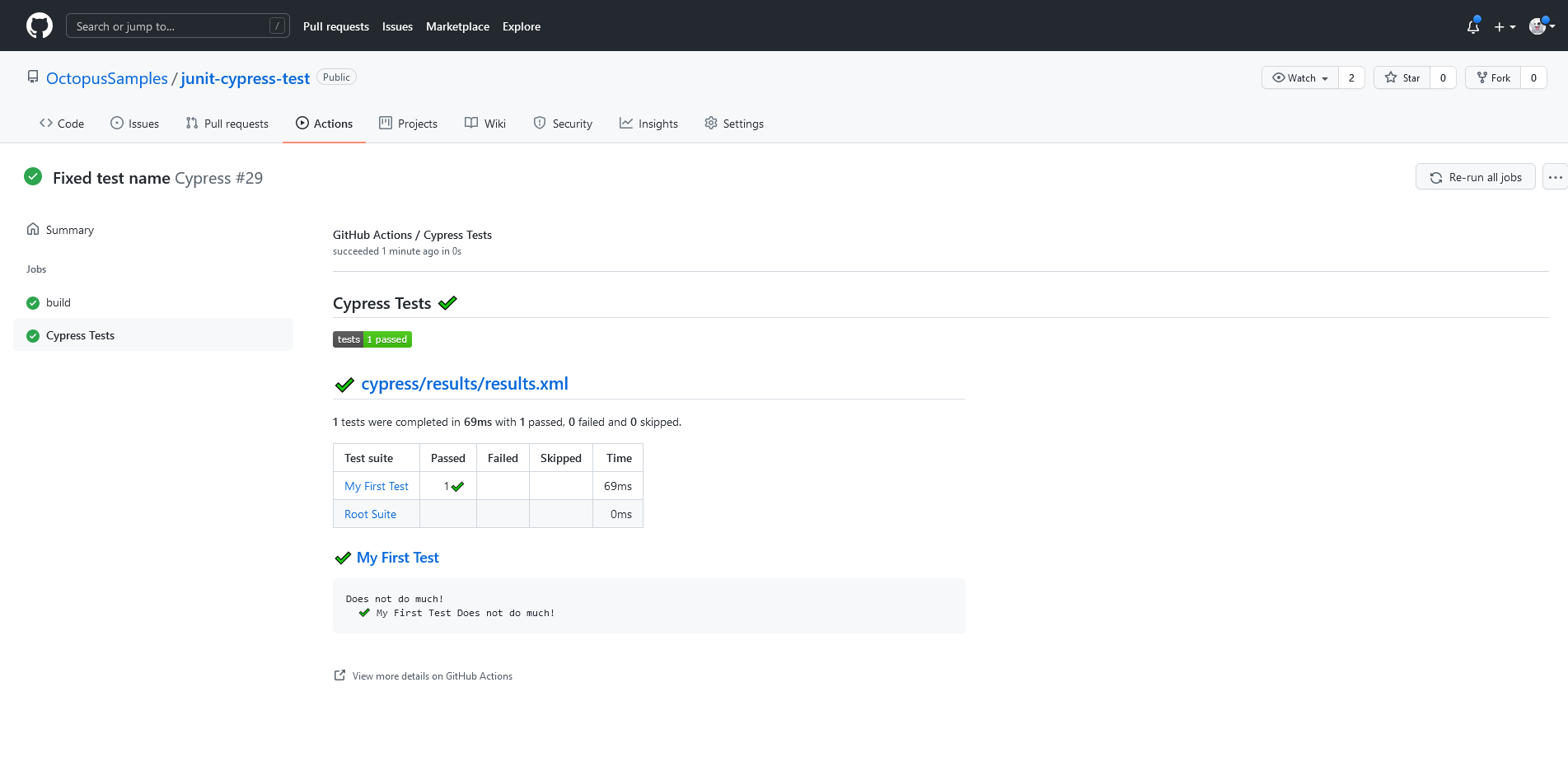
The video file artifact is listed in the Summary page:
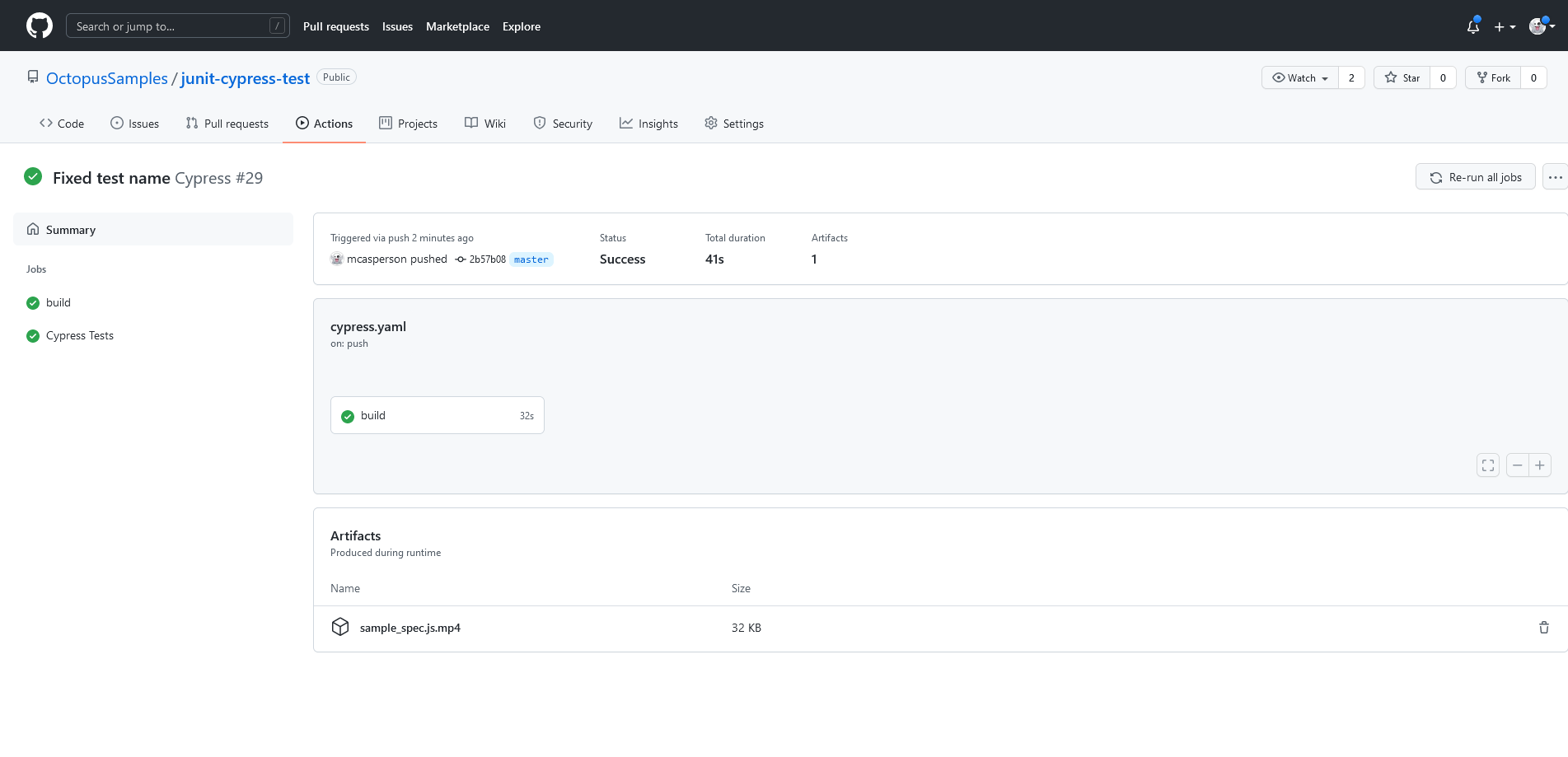
Not all testing platforms provide a GitHub action, in which case you can execute steps against a standard Docker image. This is demonstrated in the next section.
Running API tests with Newman
Unlike Cypress, Postman does not provide an official GitHub action. However, you can use the postman/newman Docker image directly inside a workflow. You can find an example of the workflow in the junit-newman-test repository:
name: Cypress
on:
push:
workflow_dispatch:
jobs:
build:
runs-on: ubuntu-latest
steps:
- name: Checkout
uses: actions/checkout@v1
- name: Run Newman
uses: docker://postman/newman:latest
with:
args: run GitHubTree.json --reporters cli,junit --reporter-junit-export results.xml
- name: Report
uses: dorny/test-reporter@v1
if: always()
with:
name: Cypress Tests
path: results.xml
reporter: java-junit
fail-on-error: trueThe uses property for a step can either be the name of a published action, or can reference a Docker image directly. In this example, you run the postman/newman docker image, with the with.args parameter defining the command-line arguments:
- name: Run Newman
uses: docker://postman/newman:latest
with:
args: run GitHubTree.json --reporters cli,junit --reporter-junit-export results.xmlThe resulting JUnit report file is then processed by the dorny/test-reporter action:
- name: Report
uses: dorny/test-reporter@v1
if: always()
with:
name: Cypress Tests
path: results.xml
reporter: java-junit
fail-on-error: trueHere are the results of the test:
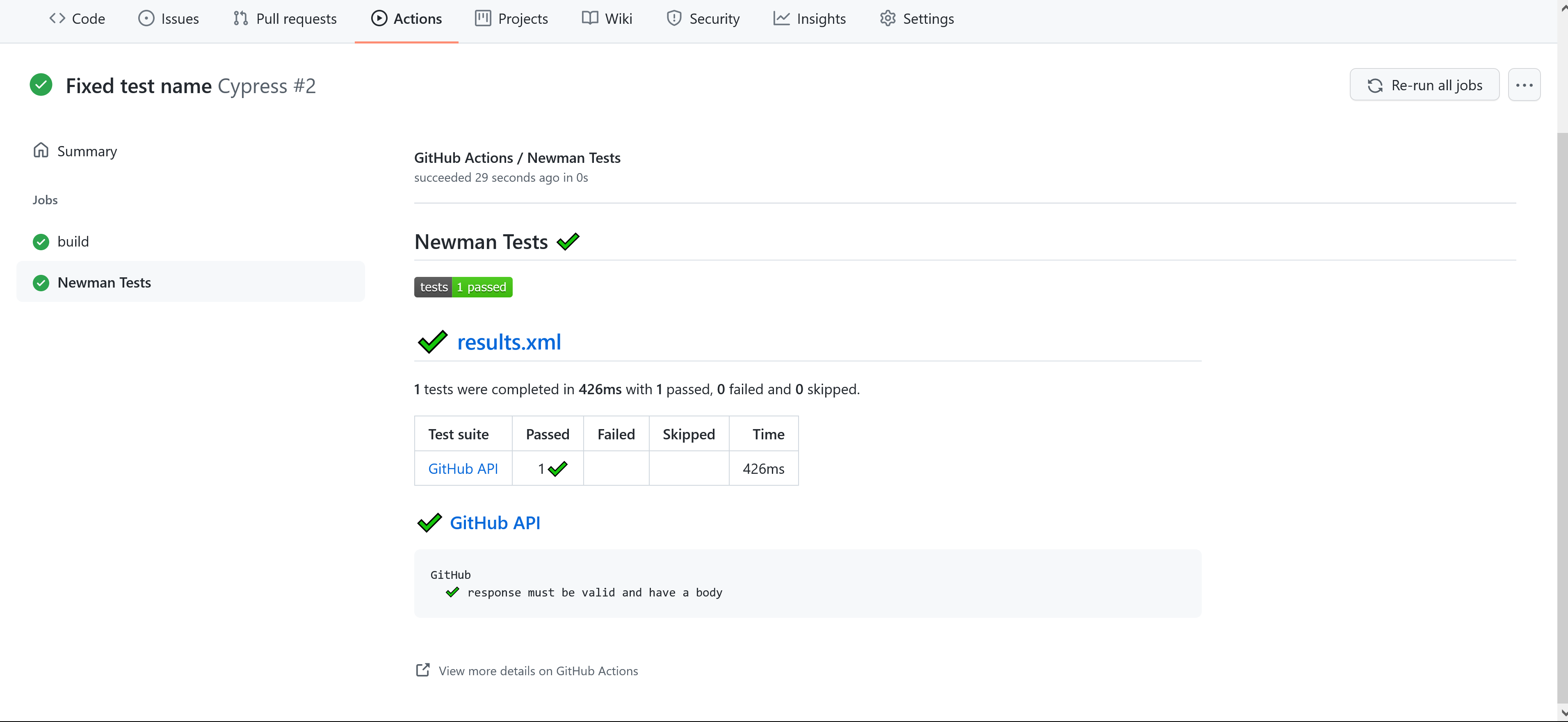
Behind the scenes, GitHub Actions executes the supplied Docker image with a number of standard environment variables relating to the workflow and with volume mounts that allow the Docker container to persist changes (like the report file) on the main file system.
The following is an example of the command to execute a step in a Docker image:
/usr/bin/docker run --name postmannewmanlatest_fefcec --label f88420 --workdir /github/workspace --rm -e INPUT_ARGS -e HOME -e GITHUB_JOB -e GITHUB_REF -e GITHUB_SHA -e GITHUB_REPOSITORY -e GITHUB_REPOSITORY_OWNER -e GITHUB_RUN_ID -e GITHUB_RUN_NUMBER -e GITHUB_RETENTION_DAYS -e GITHUB_RUN_ATTEMPT -e GITHUB_ACTOR -e GITHUB_WORKFLOW -e GITHUB_HEAD_REF -e GITHUB_BASE_REF -e GITHUB_EVENT_NAME -e GITHUB_SERVER_URL -e GITHUB_API_URL -e GITHUB_GRAPHQL_URL -e GITHUB_WORKSPACE -e GITHUB_ACTION -e GITHUB_EVENT_PATH -e GITHUB_ACTION_REPOSITORY -e GITHUB_ACTION_REF -e GITHUB_PATH -e GITHUB_ENV -e RUNNER_OS -e RUNNER_NAME -e RUNNER_TOOL_CACHE -e RUNNER_TEMP -e RUNNER_WORKSPACE -e ACTIONS_RUNTIME_URL -e ACTIONS_RUNTIME_TOKEN -e ACTIONS_CACHE_URL -e GITHUB_ACTIONS=true -e CI=true -v "/var/run/docker.sock":"/var/run/docker.sock" -v "/home/runner/work/_temp/_github_home":"/github/home" -v "/home/runner/work/_temp/_github_workflow":"/github/workflow" -v "/home/runner/work/_temp/_runner_file_commands":"/github/file_commands" -v "/home/runner/work/junit-newman-test/junit-newman-test":"/github/workspace" postman/newman:latest run GitHubTree.json --reporters cli,junit --reporter-junit-export results.xmlThis is a complex command, but there are a few arguments that we’re interested in.
The -e arguments define environment variables for the container. You can see that dozens of workflow environment variables are exposed.
The --workdir /github/workspace argument overrides the working directory of the Docker container, while the -v "/home/runner/work/junit-newman-test/junit-newman-test":"/github/workspace" argument mounts the workflow workspace to the /github/workspace directory inside the container. This has the effect of mounting the working directory inside the Docker container, which exposes the checked out files, and allows any newly created files to persist once the container is shutdown:
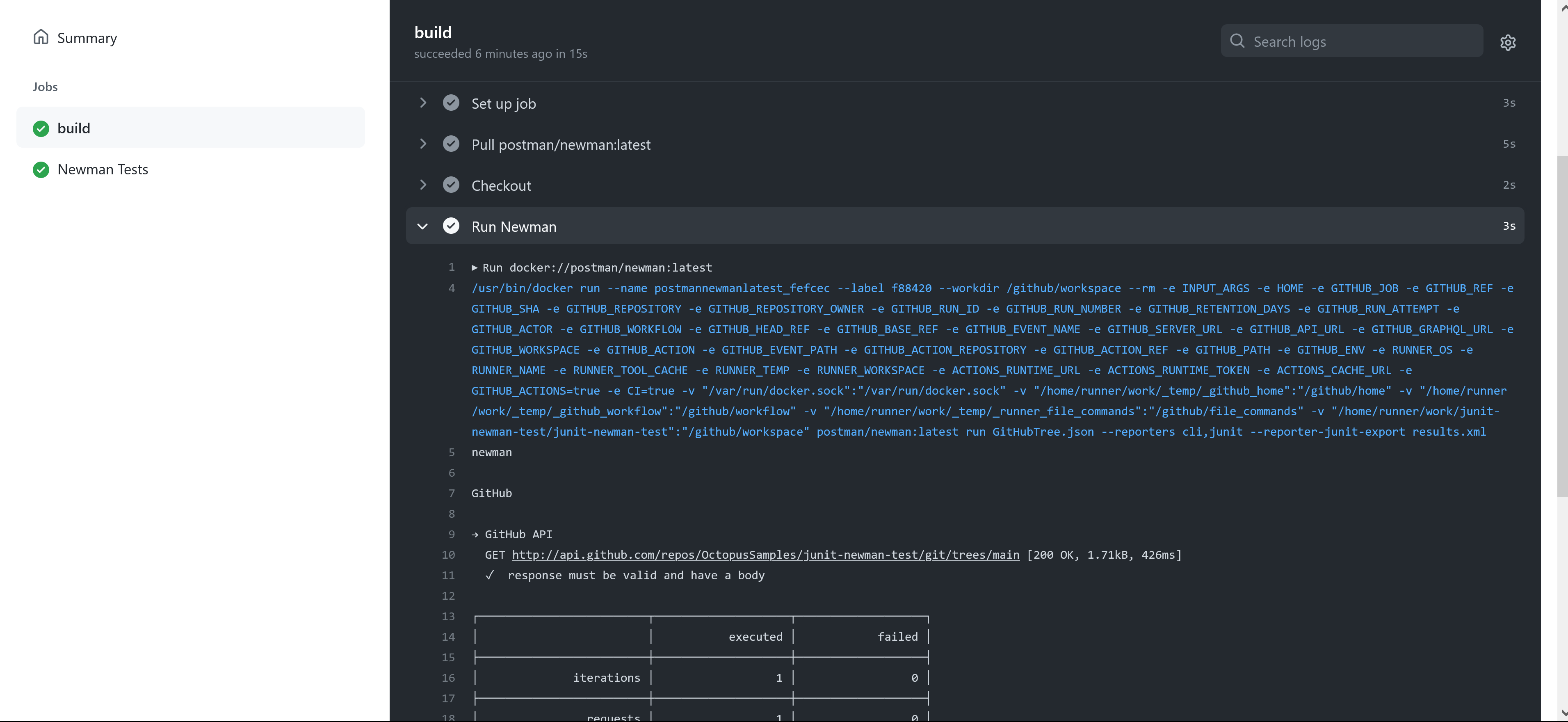
Because every major testing tool provides a supported Docker image, the process you used to run Newman can be used to run most other testing platforms.
Conclusion
GitHub Actions has enjoyed widespread adoption among developers, and many platforms provide supported actions for use in workflows. For those cases where there is no suitable action available, GitHub Actions provides an easy way to execute a standard Docker image as part of a workflow.
In this post, you learned how to run the Cypress action to execute browser based tests, and how to run the Newman Docker image to execute API tests.
Check out our other post about testing in GitHub Actions:
Try our free GitHub Actions workflow tool to help you quickly generate customizable workflows for your GitHub Actions deployments.
You can also learn more about building with GitHub and deploying with Octopus, and use our verified actions in the GitHub Marketplace.
Happy deployments!
